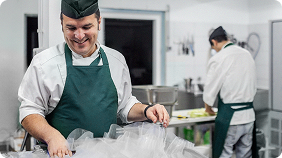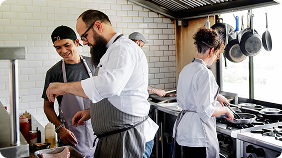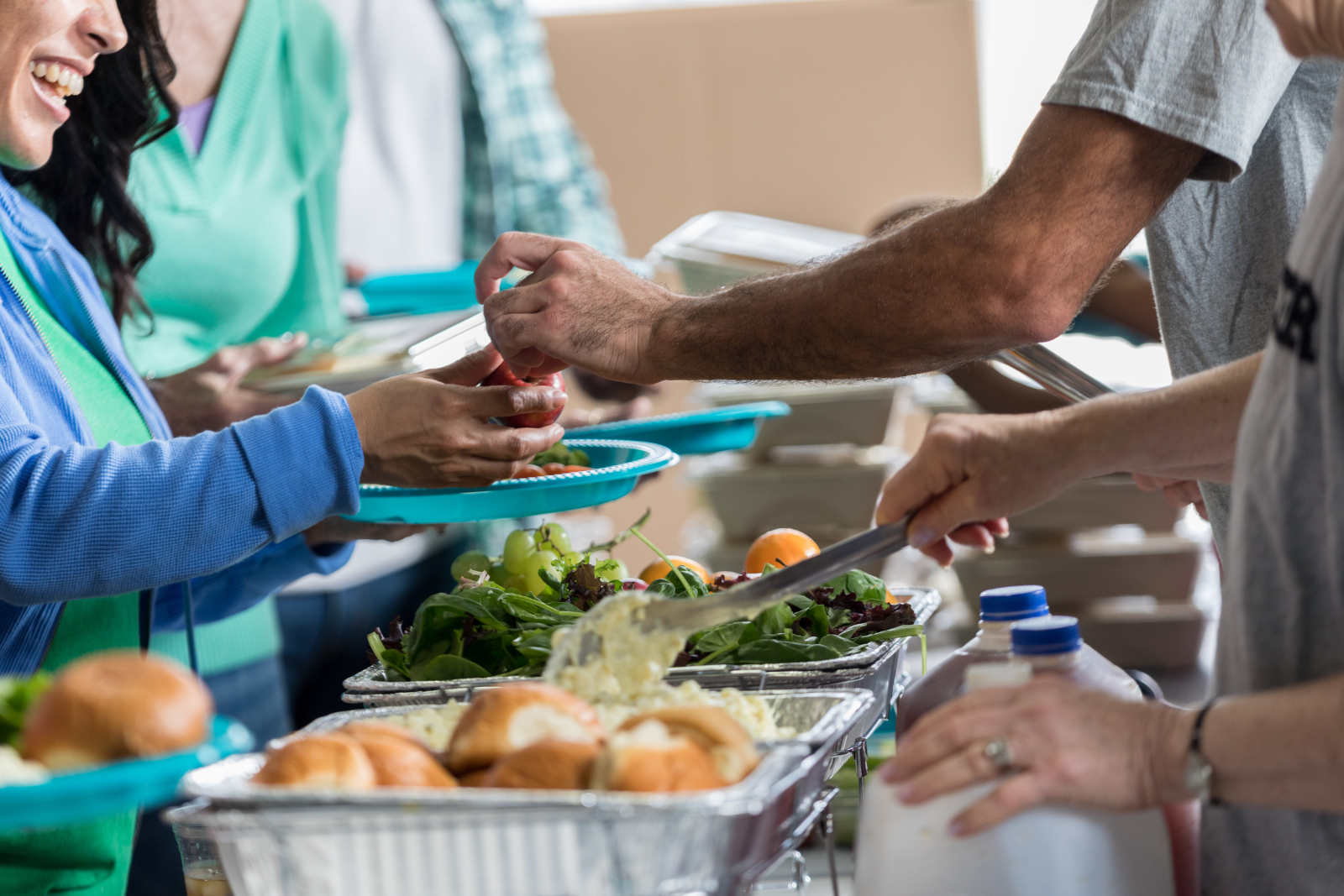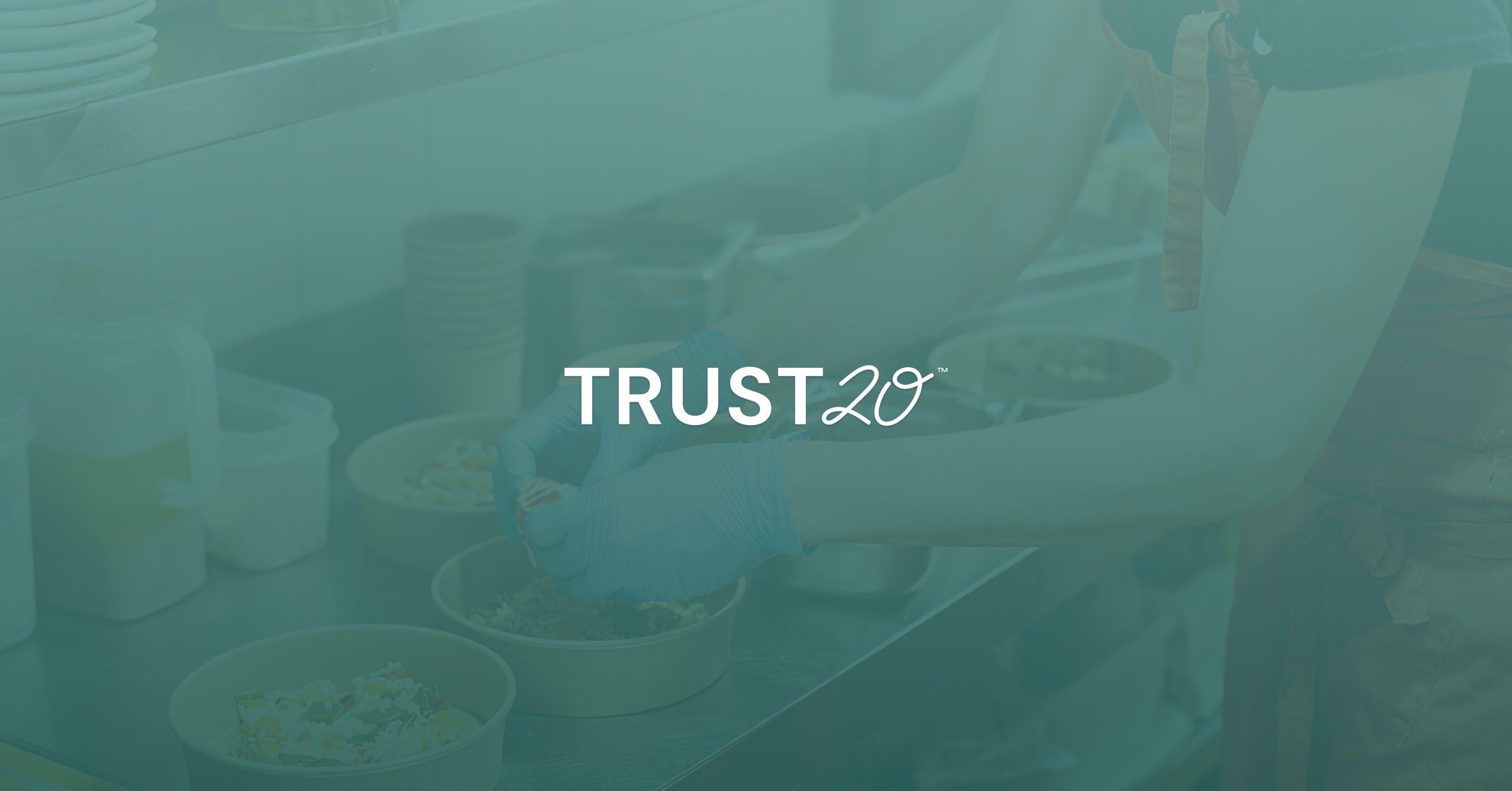A foodservice kitchen is a busy, sometimes chaotic, space where everyone on staff must be prepared for the unexpected. With flames, sharp knives, and powerful chemicals a natural part of the work environment, it is critical to have an emergency response plan in place to be able to seamlessly navigate anything that comes your way.
Read on to learn the essential steps behind writing an effective emergency response plan. Review practical insights, industry best practices, and expert tips to protect you, your customers, your team, and your business.
In this blog, we’ll cover:
Assessing potential kitchen hazards
Creating specific plans for different types of emergencies
Assessing potential kitchen hazards
Emergency response planning is about striking the right balance. Aim to catalog and prepare for potential hazards in a way that makes your team feel prepared, but not overwhelmed with anxiety about what could go wrong.
We’ve compiled a list of the most common hazards in professional kitchens and how you can prepare for them. If your venue or the type of cuisine you prepare creates its own potential hazards, be sure to account for those and train your team accordingly. (Think old, historical buildings with their own specific needs or the potential risks in serving raw foods.)
Fire hazards
According to National Fire Protection Association (NFPA) statistics, cooking equipment is the leading cause of structure fires in eating and drinking establishments.1 Your kitchen needs to have all of the basic safety requirements covered in the event that a fire breaks out.
A fire safety plan includes information about:
-
Clear paths to safety: customers and staff need to be able to exit in the event of a fire through the nearest exit, with aisles clear from chairs and secondary exits unblocked
-
Fire alarms: be sure you have at least one fire alarm in place if one is required by law and that staff knows how it’s operated (manually or automatically)
-
Fire sprinklers: ensure you are compliant with local laws about overhead sprinklers and have any installed sprinklers regularly checked and maintained
-
Fire extinguishers: any cooking equipment that produces grease-laden vapors is required to have ventilation and a wet-chemical extinguishing system, but a Class-K portable fire extinguisher is also required–along with the appropriate signage
Burns are another fire hazard to plan for since working with hot cooking surfaces and ingredients is dangerous in and of itself. Be sure everyone on staff knows where the establishment’s first aid kit is stored, how to administer care, and when it is time to call for professional medical attention.2
Hazardous chemicals
It is important to ensure your team is following the best practices for chemical storage in the kitchen, from the basics up through advanced training for management.
Employers are required to disclose workplace hazards to employees, including the chemicals they work with, following OSHA guidelines.
The Hazard Communication Standard mandates that employers:
-
Make an inventory of all the chemicals used or stored at the workplace
-
Label all chemical products
-
Obtain and make available to employees copies of the Material Safety Data Sheets (MSDSs) for all chemicals; MSDSs must provide detailed information about any chemicals, possible health effects, and how employees can work with them safely
-
Train all employees about the chemicals they work with and how to use them safely.
Chemical burns require special attention and treatment. First aid can treat minor burns, but more extensive burns require emergency medical treatment.
Equipment hazards
Your staff must know what to do if a stove or freezer malfunctions. Ensure routine inspections and maintenance are performed for all kitchen equipment, especially hood and exhaust systems, to mitigate fire hazards.
If a freezer can’t maintain proper temperatures, that becomes a food safety hazard. Other kitchen equipment, from knives to small appliances, must be stored and maintained properly. You don’t want something to miss a routine maintenance check and go out during the lunch or dinner rush, becoming an emergency all on its own.
Slip/fall hazards
Keeping kitchens as sanitary as possible means adding hazards in the form of potential slipping and falling when floors are mopped and mats are moved to clean under and around them. Staff should also use caution with ladders or stools for accessing equipment and ingredients or in general carrying heavy items.
Be sure staff wear appropriate shoes (non-slip, closed-toe shoes) and that any potential slipping hazards are well-marked until they can be cleaned up (as soon as possible).
Electrical hazards
While power outages might be the first thing that comes to mind with kitchens and electricity (another food safety hazard overlap), you also want to be sure staff is aware of the other routine electrical hazards.
Avoiding electrical fires and shocks means you should be:
-
Routinely inspecting all cables, extension cords, and electric sockets in the kitchen
-
Calling a professional to repair damage found in any of the above or immediately replacing any equipment as needed
-
Training staff to only plug in electrical equipment with dry hands.
Food safety hazards
The biggest job of any kitchen is maintaining a food-safe environment, from deliveries to storage, prep, and service. Food safety hazards include, but aren’t limited to:
-
Improper food storage
-
Improper food handling
-
Contaminated equipment
-
Medical emergencies
-
In the kitchen: burns, cuts, scrapes, falls, and smoke inhalation are all common kitchen injuries stemming from the process of food preparation that should be planned for
-
Food allergies: almost half of fatal allergic reactions were caused by restaurants or other food service businesses in the past 13 years, according to the Centers for Disease Control and Prevention (CDC), so your team needs to learn the consequences of allergic reactions and how to prevent them3
-
Outside emergencies
Sometimes disaster strikes, and there’s nothing you can do to stop it. You can only do your best to prepare and react when something outside of your control happens–like a natural disaster that comes with a shelter-in-place order.
In the event of any kind of emergency, staff need to have a detailed understanding of the kitchen layout and potential safe zones, emergency exits, and evacuation routes–plus when to use each one. They should also know the location of the first aid kit, fire extinguishers, and any other safety equipment and be trained to use it when necessary.
Creating specific plans for different types of emergencies
Your team’s response to a fire will be different from a response to a tornado. It’s best to have a specific plan in place for each type of emergency and a place where all those plans live that’s easy to access. Consider several binders stored in strategic locations around your establishment with laminated pages covering evacuation routes, the location of emergency exits and supplies (first aid kits, fire extinguishers), and different emergency response plans.
You should also designate an emergency response team and decide ahead of time who will be in charge. If that person isn’t available, who is the next person in line to be in charge? It doesn’t necessarily need to be someone in a management role if you know one person on the team would be the best to lead in an emergency situation.
An example plan in case of a fire
In case of a small kitchen fire, staff should know where the fire extinguishers are stored and how to use them. Fires should never be put out with water, and professionals should put out anything above a small fire.
Legally, most jurisdictions require restaurants to have an evacuation plan in place in case of fire. Be sure you comply with local laws and have a plan in place, even if it’s not required. Maps with evacuation routes should be posted where they are easy to see and kept updated. Staff should know all evacuation routes, which exits customers will be led out of, and who will lead them out.
For more details on how to deal with various emergency situations, see how to deal with emergencies from 12 Critical Steps to Maintaining Safe Foodservice Facilities and use it as a starting point to write each of your specific emergency response plans.
An example plan in case of a medical emergency
Sometimes, accidents or other emergencies happen that are outside of your immediate control. Having a plan in place in case of a medical emergency–including an onsite allergic reaction–will help your team feel prepared and confident to act quickly.
At a minimum, be sure everyone on staff knows to call 911 as soon as possible in case of a medical emergency and can provide the restaurant's location to the dispatchers. While one person is calling, designate others on the team to wait at the door to lead the emergency response team in and help clear a path as needed. Everyone should also know where the first aid kit is located. It should be regularly checked and restocked.
You can also ask staff members if any of them have first aid training, especially in the case of CPR or Heimlich maneuver training, but defer to their level of comfort in stepping up to help any customers, especially if your state does not have any Good Samaritan Laws in place to protect them.4
If a customer has an allergic reaction on site, the manager should know how to handle allergic reactions according to the FDA Food Code.5 Staff can follow the same response plan as other medical emergencies and ask the affected customer’s party if they have an EpiPen with them. After an injection, the person will still need medical attention and observation. Consider offering allergen awareness training to help make your establishment feel as food allergy-safe as possible.
Emergency training and drills
The best way to help your staff feel as prepared as possible in the face of emergency situations is to provide training, hold regular drills based on that training, and regularly review and update any emergency response plans you’ve put together.
Hold shorter drills once a month, before opening or after closing, and consider a day-long training quarterly when the restaurant is closed. Be sure to give everyone a purposeful role during each drill, alternating who is in charge. This cadence allows you to work the drills into any new employee onboarding without overloading their schedule or disrupting established employee routines too much.
Designated drill days can also be when fire extinguishers are checked, the first aid kit is checked and restocked, and those emergency plans are re-evaluated. The last point is critical, especially as staff turnover or employees are promoted to new positions.
Reviewing it all
No one wants to be faced with an emergency, but having plans in place for the most common emergencies that affect professional kitchens means your team can stay calm and get through any situation that arises confidently and competently.
We hope this guide can help you and your team feel as prepared as possible for anything unexpected that comes your way.
Sources:
- NFPA: Home Page
- NFPA: Restaurant Fire Protection Basics
- CDC: Shelter-in-Place
- National Library of Medicine: Good Samaritan Laws
- FARE: Food Allergies and Food Service Establishments






.png)

.png)
